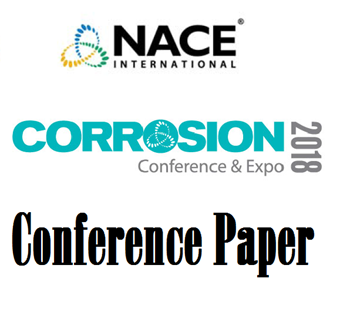Search
Products tagged with 'pitting'
View as
Sort by
Display
per page
51318-11059- Review of a UNS N04400 Heat Exchanger Tube Failure in Cooling Water Service
Product Number:
51318-11059-SG
Publication Date:
2018
$20.00
51318-11074-Effect of Elastic and Plastic Strain on General Corrosion and Metastable Pitting of Steels
Product Number:
51318-11074-SG
Publication Date:
2018
$20.00
51318-11084-The Application Limitation Boundary of Duplex Stainless Steel under Sour Condition in Oil Fields
Product Number:
51318-11084-SG
Publication Date:
2018
$20.00
51318-11116-Anodic and chemical oxidation to improve localized corrosion resistance of pure titanium
Product Number:
51318-11116-SG
Publication Date:
2018
$20.00
51318-11185-Case Studies of Amine Sweetening Corrosion Incidents
Product Number:
51318-11185-SG
Publication Date:
2018
$20.00
51318-11257-Sulfide Stress Cracking of Super 13Cr Martensitic Stainless Steel – Localized Corrosion and Hydrogen
Product Number:
51318-11257-SG
Publication Date:
2018
$20.00
51318-11382-Determination of Precursor Sites for Pitting Corrosion of UNS N07718 in Cl-Environments – Part 1. Experimental Setup
Product Number:
51318-11382-SG
Publication Date:
2018
$20.00
51318-11387-Determination of Precursor Sites for Pitting Corrosion of UNS N07718 in Cl-Environments – Part 2. Experimental Results
Product Number:
51318-11387-SG
Publication Date:
2018
$20.00
A highly-corrosive sulfate reducing bacterium as a model microbe to improve MIC investigations
Product Number:
51323-18912-SG
Publication Date:
2023
$20.00
A Parametric Evaluation of Well Construction Corrosion-Resistant Alloys for Geological Carbon Sequestration
Product Number:
51324-20582-SG
Publication Date:
2024
$40.00
A Review of Corrosion-Related Failures and Preventive Measures on Non-Magnetic Cr-Mn Austenitic Stainless Steel Drill Collars
Product Number:
51323-19370-SG
Publication Date:
2023
$20.00
AA5083 and AA6082 Exposed to Seawater – Effect of Temperature and Potential on Corrosion Behaviour
Product Number:
51317--8942-SG
ISBN:
8942 2017 CP
Publication Date:
2017
$20.00












